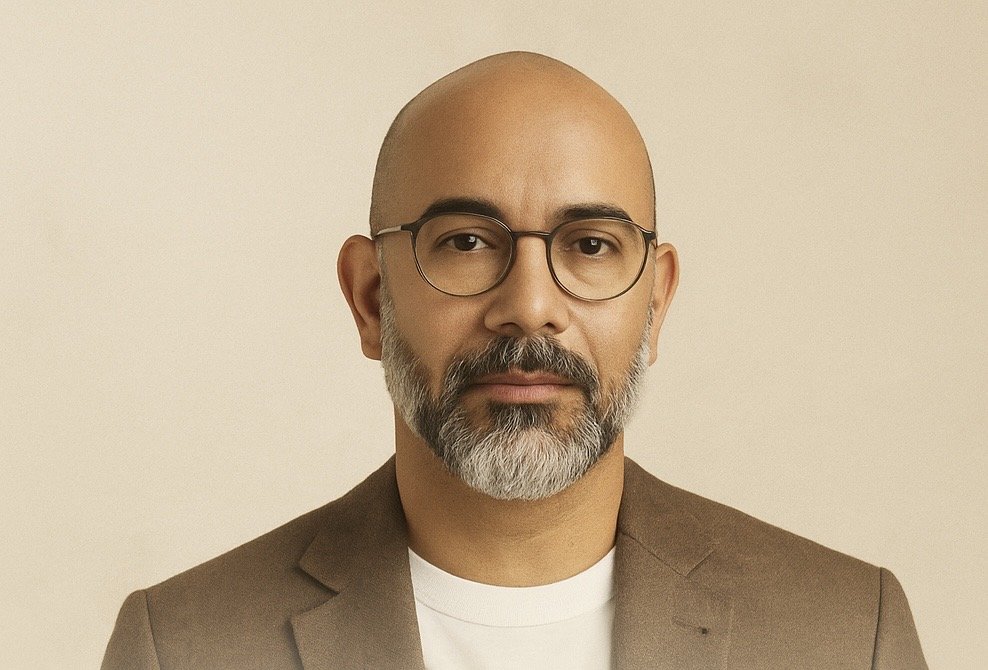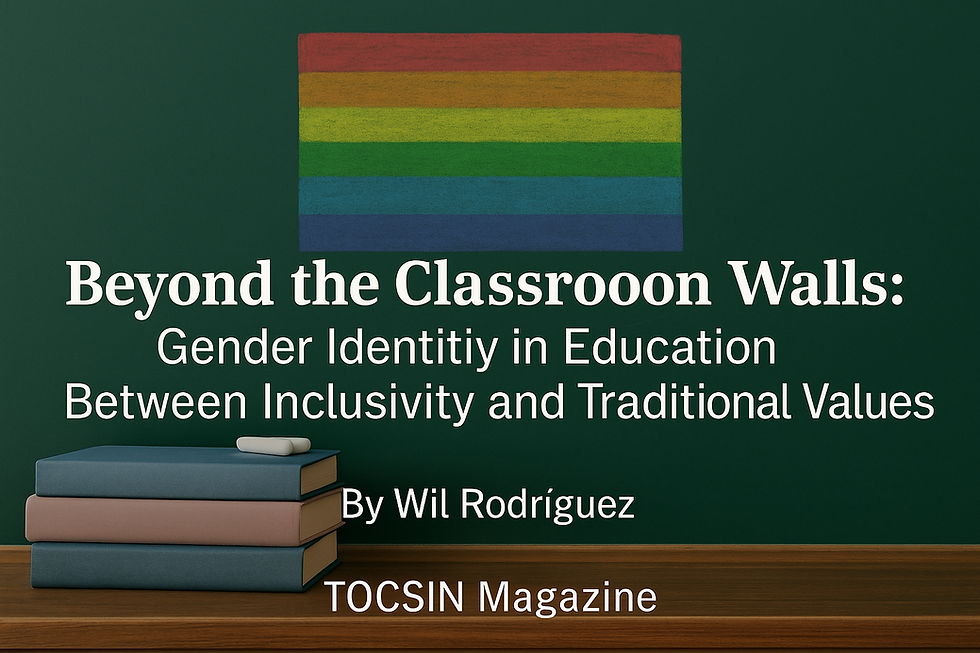Beyond the Classroom Walls
- Dr. Wil Rodriguez

- 8 hours ago
- 4 min read
Gender Identity in Education Between Inclusivity and Traditional Values
By Wil Rodríguez, TOCSIN Magazine

Education in the Crossfire
Schools have always been battlegrounds for society’s most difficult questions — evolution, prayer, sex education. Today, the front line is gender identity. How should educators address students who identify beyond traditional male and female categories?
For advocates of inclusivity, affirming gender identity is not ideology but basic human respect. For defenders of tradition, it threatens to dismantle long-standing cultural and religious values. This article dives into the global landscape, bringing data, legal precedents, and real-world comparisons to a debate that defines the future of education.
The Push for Inclusivity: Evidence and Data
Supporters of inclusivity emphasize measurable outcomes:
Mental health and safety:
According to The Trevor Project (2023), 45% of LGBTQ+ youth in the U.S. seriously considered suicide in the past year, with trans and nonbinary youth reporting the highest risk.
Schools that adopted inclusive policies (pronoun recognition, gender-neutral facilities) saw a 43% reduction in suicide attempts among these students.
Academic performance:
A 2021 GLSEN survey showed that LGBTQ+ students in affirming schools reported higher GPAs (3.3 vs. 2.8) and were 23% more likely to plan for college.
Legal frameworks:
Many Western nations treat gender identity as a protected category. The EU’s Charter of Fundamental Rights and the UN’s Convention on the Rights of the Child have been cited in cases pushing for recognition of trans students in schools.
Key point: Data consistently show that inclusive policies reduce harm and increase engagement for marginalized students.
The Defense of Traditional Values: Concerns and Realities
Opponents also marshal data and principles:
Parental rights:
A 2022 Pew Research Center survey found that 59% of U.S. parents believe parents, not schools, should have the final say on how gender identity is addressed in education.
Cultural resistance:
In many societies, family and religious institutions shape identity. In Africa and parts of Asia, surveys show that over 80% of respondents oppose teaching about gender diversity in primary schools, reflecting deeply held cultural norms.
Fear of social division:
Opponents argue that introducing contested gender concepts at early ages risks polarization and confusion. They cite cases in Canada and the U.K. where parental protests shut down programs deemed “too ideological.”
Key point: Traditionalists view gender inclusivity as overreach into family life and cultural heritage — not just a school policy.
International Comparisons: A Patchwork of Approaches
North America
United States: A cultural battleground. States like California mandate gender-inclusive curricula, while Florida restricts classroom discussion on gender identity until certain grades. The result is a polarized educational landscape where geography determines a child’s experience.
Canada: Provinces such as Ontario introduced comprehensive LGBTQ+ inclusive education, but in 2023, protests in several provinces revealed deep cultural divides.
Europe
Scandinavia: Sweden and Norway emphasize inclusivity, introducing gender-neutral pronouns and teaching materials. Surveys show majority public support for these measures.
United Kingdom: Struggles with balance. The government issued new guidelines in 2023 limiting how gender identity should be discussed, stressing parental involvement.
Latin America
Argentina: A pioneer, passing a Gender Identity Law in 2012 requiring schools to respect self-identified gender.
Mexico: Inclusive education exists on paper, but implementation varies widely across states due to cultural and religious resistance.
Asia & Africa
Japan: Slowly introducing gender-neutral uniforms in some schools. Public debate remains cautious but open.
Sub-Saharan Africa: In most countries, gender inclusivity in schools is either banned or politically untouchable, reflecting prevailing social conservatism.
The Ethical Dilemma: Rights vs. Traditions
At the core lies a philosophical standoff:
Rights-based inclusivity: Students have an inalienable right to learn in a safe, affirming environment.
Tradition-based preservation: Families and cultures have a right to pass on their values without interference from state institutions.
Neither principle can be dismissed lightly, which is why compromises often fail to satisfy both camps.
Possible Frameworks for Reconciliation
Age-appropriate curricula: Distinguishing between primary education (focused on respect and kindness) and secondary education (introducing identity debates more fully).
Parental engagement: Involving parents in curriculum design and providing opt-out options in non-essential programs.
Focus on anti-bullying: Regardless of ideology, all sides agree that no child should face harassment.
Transparent policy-making: Publishing clear guidelines prevents rumors and reduces mistrust.
Conclusion: The Classroom as Society’s Mirror
Debates about gender identity in education are not about schools alone; they reflect deeper struggles over the meaning of culture, family, and the future. Education is the stage where these values collide, but it can also be where mutual understanding is born.
The question is not only “What should children learn?” but “What kind of society do we want to build?” If schools can balance inclusivity with respect for tradition, they may model the very coexistence our divided societies desperately need.
Reflection Box — by Dr. Wil Rodríguez
Every generation tests the boundaries of tradition and progress. Gender identity in education is today’s test. The danger is not that children will learn too much, but that adults will learn too little about empathy, dialogue, and coexistence. The classroom is not just a place of instruction — it is a rehearsal for democracy itself.
For more in-depth explorations of cultural debates shaping our communities, visit TOCSIN Magazine.
Go to: tocsinmag.com







Comments